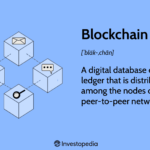The integration of AI in STEM education enhances learning experiences and outcomes. It aids in personalizing curriculum and assessing student performance accurately.
The fusion of Artificial Intelligence (AI) into STEM (Science, Technology, Engineering, and Mathematics) education marks a transformative step in educational methodologies. This integration tailors instructional materials to individual student needs, optimizes engagement, and streamlines evaluation processes. AI’s data-driven insights empower educators to fine-tune their teaching strategies, ensuring each student can access the support and challenges they need.
As a driving force behind innovative educational tools, AI assists in demystifying complex concepts through interactive simulations and adaptive learning platforms. The result is a more dynamic, inclusive, and effective education system that equips students with critical 21st-century skills. Embracing AI-driven STEM education prepares learners not just to understand but also to contribute to the rapidly evolving technological landscape.
Introduction To Ai In Education
Welcome to the thrilling world where artificial intelligence (AI) meets education. The fusion of AI technologies in classrooms, especially within STEM (Science, Technology, Engineering, and Mathematics) disciplines, is reshaping how teachers teach and students learn. This integration brings exciting possibilities and transformative potential for personalized learning experiences and innovation in teaching methodologies.
Defining Ai And Its Relevance To Modern Learning
Artificial intelligence refers to machines designed to think like humans. AI can handle tasks that usually require human intelligence. This includes problem-solving, recognizing patterns, and understanding language. AI’s role in learning is pivotal. It offers tailored educational content. It helps every student learn at their best pace. AI’s assistance in education is no longer a futuristic thought. It is here now, enhancing learning experiences.
Overview Of Stem Education And Its Importance
STEM education stands for the integration of Science, Technology, Engineering, and Mathematics. It emphasizes interactive and application-based learning. STEM programs foster critical thinking, creativity, and problem-solving skills. These skills are crucial for the future. Our fast-changing world requires a workforce skilled in STEM subjects. This underscores STEM’s significance in modern education.
The Intersection Of Ai And Stem: A Transformative Potential
AI’s introduction into STEM curricula is game-changing. It bridges learning gaps with adaptability and personalization. For instance, AI can provide instant feedback on student projects. It can guide them through complex problems. Students gain insights from AI models. These models simulate real-world STEM issues. This creates a dynamic environment where learning is hands-on and minds are engaged. Students develop skills vital for future careers in a tech-driven world.
Current State Of Ai In Stem Education
The world of education is evolving with the dawn of artificial intelligence, particularly in Science, Technology, Engineering, and Mathematics (STEM). AI tools are reshaping how students learn these subjects. It is crucial to understand where we stand today in integrating AI within STEM education. Let’s explore the exciting advancements and current challenges in this field.
Ai-driven Educational Tools And Resources In Stem
AI has brought a revolution to STEM learning with smart educational tools. These tools assist students in grasping complex concepts with ease. The following are noteworthy:
- Adaptive Learning Platforms: Tailor learning experiences to each student
- Intelligent Tutoring Systems: Provide real-time feedback and support
- Simulation Software: Create immersive virtual environments for experimentation
Case Studies: Successful Ai Integration In Stem Classrooms
Several schools and institutions have set benchmarks by successfully introducing AI in their classrooms. A table displaying a snapshot of these successes:
| Institution | AI Implementation | Outcome |
|---|---|---|
| Sunnyside High | AI tutors in mathematics | Improved test scores by 20% |
| Greenwood Academy | Virtual science labs | Enhanced students’ practical skills |
| CyberTech Middle School | Data analysis software | In-depth understanding of scientific data |
Challenges And Limitations Of Ai In Education
Despite the progress, challenges in AI implementation persist. Understanding these limitations helps in crafting better solutions.
- Data Privacy: Ensuring student information stays protected
- Access inequality: Bridging the gap for underfunded schools
- Technical Issues: Overcoming software glitches and downtime
Impact And Benefits Of Ai Integration In Stem
The digital era has dramatically reshaped the STEM (Science, Technology, Engineering, and Mathematics) education landscape. One of the most exciting changes comes with the integration of Artificial Intelligence (AI). This innovative leap forward offers significant impact and benefits, transforming how we educate the next generation of scientists, tech experts, engineers, and mathematicians. AI tools personalize the learning experience, streamline administrative duties, enhance learning analytics and prepare students for the future job market.
Personalization Of Learning And Ai’s Role In Differentiated Instruction
AI brings tailor-made learning experiences to students. By analyzing individual learning patterns, AI creates a unique path for each student. It identifies strengths and areas for improvement, offering custom resources and challenges. This ensures kids learn at their own pace, keeping them engaged and motivated.
- Different learning styles are catered to, making STEM subjects accessible for all.
- AI adapts to student responses, providing real-time feedback and support.
- Teachers receive detailed insights, allowing for targeted guidance.
Automating Administrative Tasks And Facilitating Learning Analytics
AI also significantly reduces the time teachers spend on tasks like grading and attendance. This automation allows educators to focus more on teaching and mentoring. AI-powered tools also track and assemble data on student performance, delivering learning analytics that spotlight trends and predict student outcomes. Teachers use this data to make informed decisions that enhance STEM education.
- Grading of quizzes and assessments turns faster and bias-free.
- Attendance and participation are easily monitored, improving accountability.
- Smart analytics provide insights into class performance, guiding future lessons.
Preparing Students For An Ai-driven Future: Skills And Competencies
STEM education with a dash of AI provides students not only with content knowledge but also with the competencies for a tech-forward future. Through AI, students develop critical thinking, problem-solving, and adaptability. They familiarize themselves with machine learning, robotics, and data analysis, all of which are key skills in the modern workforce. Embracing AI in STEM curricula equips learners with the knowledge to excel in tomorrow’s job market.
- Students harness AI to tackle real-world STEM challenges, boosting their confidence and skills.
- They collaborate with AI technology, preparing them for future workplace dynamics.
- The curriculum includes innovative AI projects, spurring creative thinking.
Ethical Considerations And Best Practices
As we integrate AI into STEM education, we must consider how we do it. We want to make sure we are fair and safe. Here, we explore what to think about to use AI the right way in schools.
Data Privacy And Ethical Use Of Student Information
Keeping student information safe is a big deal when using AI in schools. Schools should:
- Get permission from families before collecting data.
- Make sure the AI tools protect student privacy.
- Teach students about online safety.
Combatting Bias In Ai And Promoting Equitable Education
AI can sometimes be unfair. To make sure every student has the same chances, schools need to:
- Check the AI for biases often.
- Use AI that benefits all students.
- Create lessons that are fair for everyone.
Best Practices For Implementing Ai In Stem Curricula
When adding AI to STEM lessons, schools should follow these steps:
- Start with a plan that shows how AI can help students learn better.
- Choose AI tools that are good for teaching.
- Train teachers to use AI in the classroom.
- Keep checking if the AI is helping students learn.
The Future Of Ai In Stem Education
The horizon of STEM education is rapidly expanding with the integration of Artificial Intelligence (AI). AI not only transforms how we teach and learn but also empowers students to tackle complex problems. With AI’s constant evolution, the STEM classroom of tomorrow will be a hub of innovation and personalized learning.
Emerging Trends In Ai That Could Shape Stem Learning
Educational tools powered by AI are breaking new ground. Here are some trends that are reshaping STEM education:
- Customized Learning Experiences: AI-driven platforms adapt to each student’s learning pace.
- Intelligent Tutoring Systems: These systems provide real-time feedback, enhancing student understanding.
- Interactive Simulations: AI creates realistic models that allow students to experiment and learn.
- Data-Driven Insights: Educators receive valuable information on student performances, tailoring their teaching strategies.
The Role Of Educators And Policy Makers In Ai Adoption
Teachers and policy makers play a pivotal role in integrating AI into STEM education. Successful AI adoption relies on:
- Professional Development: Training educators to effectively use AI tools is essential.
- Curriculum Integration: AI must become a part of the STEM curriculum to be effectively taught.
- Policy Frameworks: Regulations and guidelines ensure AI is used ethically in education.
- Resource Allocation: Investing in AI technology ensures equitable access across schools.
Envisioning The Stem Classroom Of The Future With Ai
Imagine a STEM classroom enhanced by AI:
- Personalized Learning Paths: Every student receives instruction tailored to their needs.
- Collaborative Robotics: Students work alongside robots to solve problems and conduct experiments.
- Virtual Laboratories: Learners access cutting-edge equipment through virtual reality.
- AI Mentors: Virtual mentors guide students in complex projects.
This classroom is no longer a distant dream but a near-future reality. AI is setting the stage for a revolution in STEM education, unlocking potential and fostering an environment where every student can succeed.
Frequently Asked Questions For The Integration Of Ai In Stem Education
How Is Ai Used In Stem Education?
AI enhances STEM education by offering personalized learning, automating grading, and providing interactive simulations for complex concepts. It also facilitates research through data analysis and supports the development of critical thinking skills via educational gaming.
What Is The Integration Of Artificial Intelligence In Education?
The integration of artificial intelligence in education customizes learning experiences through adaptive learning software and automates administrative tasks. This enhances educational outcomes by providing personalized support and analytics for student performance and progress.
How Artificial Intelligence Can Be Used In Education?
Artificial Intelligence enhances education through personalized learning, automating grading, and offering intelligent tutoring systems. It also facilitates adaptive learning programs and provides real-time feedback to students and educators.
What Is Integrated Stem Education?
Integrated STEM education is a teaching approach that combines science, technology, engineering, and mathematics into a cohesive learning paradigm based on real-world applications. It encourages problem-solving, critical thinking, and collaborative skills through interdisciplinary projects.
Conclusion
Embracing AI in STEM education marks a significant leap forward. It equips students for future challenges and advances learning. Educators and learners stand to gain from AI’s personalized touch and efficiency boost. As we move forward, the fusion of AI within STEM promises to unlock vast potential, reshaping education’s landscape.
Explore, adapt, and innovate – the journey begins.





